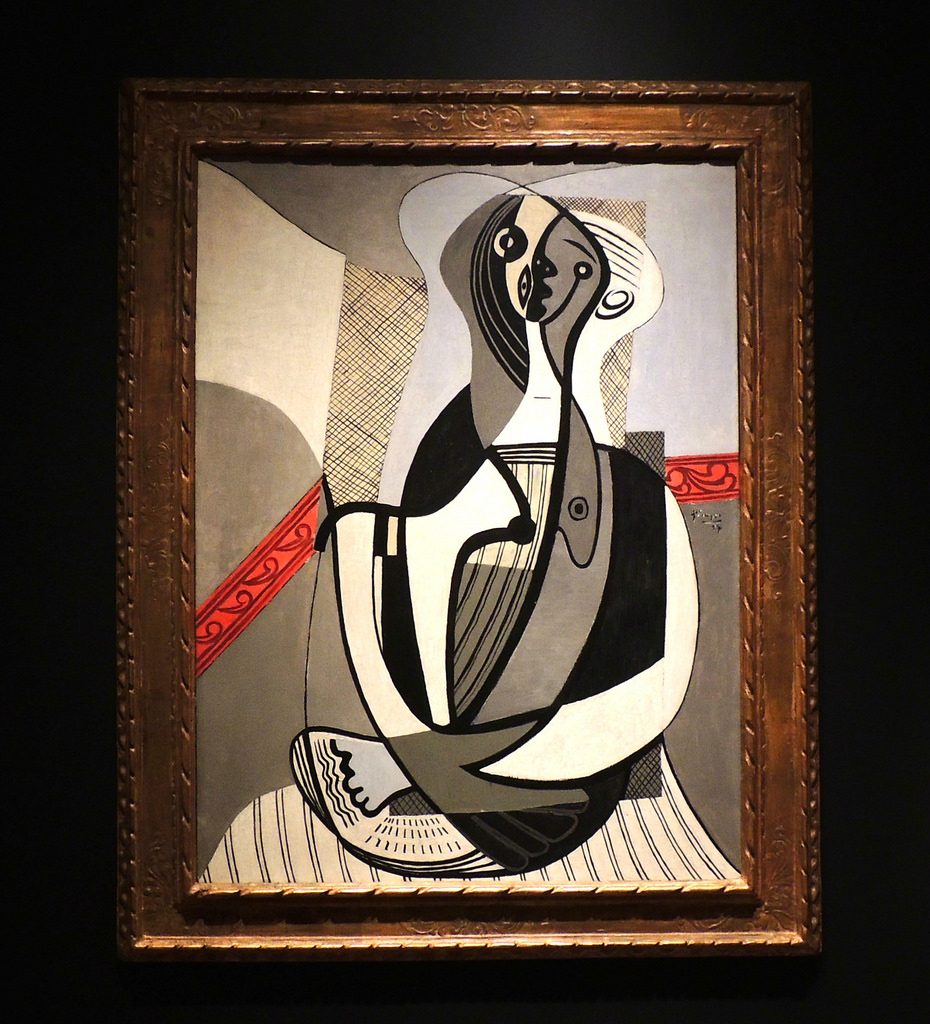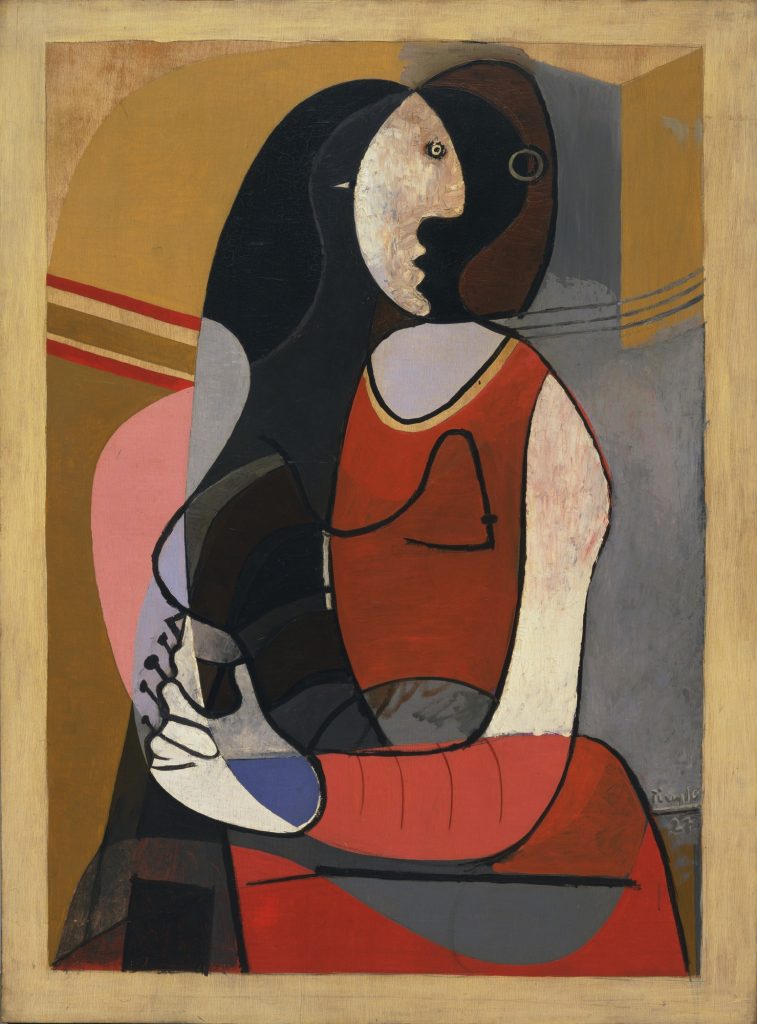Gallery Guide Susan Morrison continues her multipart series on the contributions of the AGO’s Women’s / Volunteer Committees to the gallery’s collections. This week: The Women’s Committee helps snag a Picasso from the MoMA.
First a confession: I read labels. Sorry Mr. Thomson, but I like to know the details about the artworks I am looking at. And because of this habit, I have sometimes come across things that make me curious to know more. This case study was prompted by just such a label. When the Picasso show was here in 2012, the AGO’s Seated Woman was on display on the main floor, as a supplement to the exhibition. Its label read(s) “Purchase, with assistance from the Women’s Committee and anonymous contributions, 1964.”
Also on display at the time were materials related to “Picasso and Man”, an incredibly ambitious show organized in 1964 by then curator Jean Sutherland Boggs which drew together over 270 artworks from all over the world, including the USSR. The catalogue for the show lists Seated Woman/Femme Assise 1926-1927 as number 93 of the works on display; the label for the painting stated that it had been lent by the Museum of Modern Art in New York, to whom it had been gifted in 1937 by Stephen C. Clark.
So…what happened in 1964 to occasion the transfer from the MoMA to the Art Gallery of Toronto?
It turns out that MoMA was interested in selling its painting.
De-accessioning has become a problematic instrument for museums and galleries to obtain funds for new purchases, often due to the potential public outcry at the loss of favorite artworks (witness the recent debacle at the National Gallery of Canada and its Chagall painting). To think that the MoMA would sell off a Picasso from its collection is mind-boggling today, but that’s exactly what transpired in 1964. And its justification for doing so makes sense.
In 1961, collector and art historian James Thrall Soby had given MoMA another painting with the same dimensions, same date, and same subject matter as the one given 24 years earlier by Clark. Both Seated Woman paintings were shown in the 1962 MoMA exhibition of works drawn from its collections in honour of Picasso’s 80th birthday. MoMA apparently did not need two paintings that were this similar and the museum must have considered the Soby version to be the stronger of the two.
Alfred H Barr, the Director of Museum Collections at MoMA at the time, (though initially its founding director and chief taste-maker), cautiously revealed in a letter to AGT’s director William Withrow that it was MoMA’s custom to sell artwork occasionally when it wanted to buy another artwork by the same artist. He concluded that the money raised by selling the earlier Seated Woman would be used to buy a Picasso unlike any they already had, and therefore of greater value and relevance to the collection.
And the AGT was interested in buying it.
In a press interview at the time of the purchase, AGT director Withrow describes the painting as one of Picasso’s “gentler and more decorative works” (recall the other paintings Picasso was doing of women at this time), and claimed that it was recognized as one of Picasso’s masterpieces. “We find,” he stated, “the exhibitions we arrange stimulating, but too short. Therefore, we like to use them to build up our collections and to make the experience an enduring one for anyone who enters the Art Gallery.” To further justify its acquisition, Withrow referred to what he considered the three most important artworks in the Gallery’s collection: Gainsborough’s The Harvest Waggon 1784-5, Frans Hals’ Isaac Abrahamsz Massa 1626, and Claude Lorrain’s The Embarkation of Carlo and Ubaldo 1667, and affirmed confidently that the Picasso would take its rightful place as the fourth. At the time, the AGT owned two Picassos: the bust of Fernande (1909) bought in 1949, and Crouching Woman (1902) bought in 1963.
Once the idea of the purchase was broached, a price had to be established and the funds raised. Initially, Barr set the cost at $150,000. Withrow countered with an offer of $125,000. Barr then explained that he could get at least $135,000 from other possible buyers, but since he wanted the painting to go to the AGT, he would accept $130,000. Withrow agreed, but asked that the purchase price not be divulged to ward off any public outcry at the considerable expense. He then went about trying to raise the funds necessary for the purchase. Given that there were time constraints—the deal had to be finalized before the Picasso show closed in Montreal on March 31—the actual assembling of the money was inordinately difficult, as it had to be cobbled together from a variety of sources with no time for fund-raising activities. In fact, in the end, they managed to raise all but $5000, an amount which was then generously donated by a local philanthropist. On April 12, 1964, it was publicly announced that the deal had gone through and the painting purchased.
As for the role of the Women’s Committee in all this, they contributed their entire purchase budget for 1964—for a total of $30,000 – but only after Jean Sutherland Boggs had convinced them to reconsider their policy of buying only New York School contemporary art. The Junior Women’s Committee added another $7000.
Previous post: Connections and Collections: Case Studies 2: The Day One That Got Away


